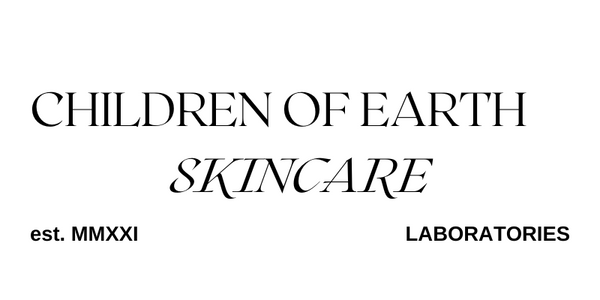
The science behind the skin-brain connection
Picture a skin cell: and you might be surprised! We aren't really taught this in school, but our skin cells are equipped to be in constant communication with our brains. Here's the scoop!*
*Please see end of post for scientific references.
How is it possible?
Communication with the brain is possible due to the high amount of blood vessels and the several nerve endings that exist in our skin.
Biologically active compounds found in the skin are not only locally produced in our skin, but science has shown they may be actively transported from blood, released from nerves or from migrating immune cells, creating a constant "spaghetti junction" of activity!
It also works the other way! The compounds can diffuse back to blood or activate local nerve endings - thereby influencing central systems such as the brain!
Most importantly, the role of skin cells in the production of serotonin (the feel good hormone) is only just starting to come to light.
Why is this?
As the skin and brain are formed at the same time in the womb, the skin has a system which is peripherally like the HPA (hypothalamic-pituitary-adrenal) axis.
But what is the HPA, and how does the skin mimic its activity?
To recap, the HPA involves the central nervous system and the endocrine system adjusting the balance of hormones in response to stress. Stress results in the hypothalamus stimulating the pituitary gland to release hormones that further cause the adrenal glands to release cortisol.
The skin, like the HPA, has an ability to control the cortisol (think: stress), serotonin (think: happiness) and melatonin (think: circadian rhythm) responses.
For cortisol, enzymes that control cortisol activity, 11β-hydroxysteroid dehydrogenase type 1 and 2, are proven to exist in the skin (Tiganescu et al., 2014), and in a time-dependent manner they control cortisol levels through positive- and negative-feedback mechanisms.
For serotonin and melatonin, each cell is equipped with a mechanism for biosynthesis of both.
Important: This is because, importantly, skin cells also have fully functional serotonin producing and melatonin producing systems (who knew!?)
What does this mean?
For example, serotonin levels in our skin were found to be lower in the winter months. Anxiety symptoms may also flux with seasonal changes, with a worsening of symptoms during the winter months.
Studies confirm this: in an Australian study, Marriott et al7 examined 133 patients with anxiety symptoms and panic attacks; as anticipated, investigators confirmed seasonal influences characterized by a worsening of both symptom types during the winter months. This was confirmed by 2 further studies done by Oyane et al1 and Winthorst et al3.
This explains why we love sunbathing, traveling during the summer months, and being outdoors in the sunshine: because we have higher levels of serotonin and therefore feel "happier".
Therefore if we feel better, with more serotonin in the summer months and less pronounced anxiety, surely the skin and brain are much more linked than we give them credit?
Conclusion: to balance out the serotonin in our bodies all year round and help avoid fluctuations in mindset, we should take care of the skin-brain connection all year round!
Our tips:
1. Carve out 30 minutes-1 hour exposure to sunlight / morning light if possible. And book that winter sun holiday!
2. Use ingredients in your skincare routine with proven anti-anxiety (anxiolytic) effects in studies: choose ingredients such as lavender, clary sage, mandarin, bergamot, rose or ylang ylang if you suffer from anxiety.
3. Make sure your skincare is organic: knowing that compounds can easily penetrate into the blood, make sure no endocrine disruptors are present in your wellness routine!
4. Seek out clinics that understand the skin-brain connection. At Salon C Stellar, in London, UK, book in for with an expert facial massage (responsible for activating these very slow nerve fibres in the skin that result in positive feelings and ultimately reduce levels of cortisol) and a guided meditation during treatments!
Sources + Further Reading:
The Brain–Skin Connection and the Pathogenesis of Psoriasis: A Review with a Focus on the Serotonergic System ://www.mdpi.com/2073-4409/9/4/796
Sunshine, Serotonin, and Skin: A Partial Explanation for Seasonal Patterns in Psychopathology? https://www.ncbi.nlm.nih.gov/pmc/articles/PMC3779905/
The Brain-Skin connection by Dr Claudia https://www.doctorclaudia.com/the-brain-skin-connection
